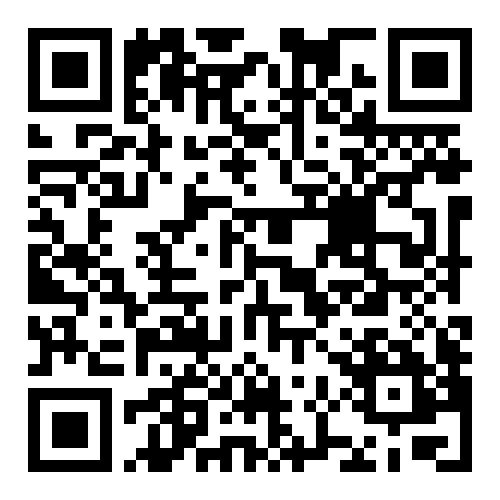

Waratah Seed-1, the groundbreaking Australian satellite ride-share mission, has secured a spot in the Finals of the prestigious Small Satellite Mission of the Year Award, presented by the American Institute of Aeronautics and Astronautics.
Australians have the chance to support our ‘little Aussie satellite’ in a Public Vote starting on Monday 11th August, Australian Eastern Standard Time (AEST), and closing on Wed 13th August at 3.59pm AEST.

Waratah Seed-1 is the only Australian satellite mission to reach the finals, competing against international powerhouses like NASA and the European Space Agency.
Australians can cast their vote for the Waratah Seed-1 mission online using the QR code on the right, or Click Here to Vote.
The winner will be announced live on the final day of the AIAA SmallSat Conference in Salt Lake City, Utah USA on August 13th.
The Waratah Seed-1 Mission has been a huge success, with all onboard systems fully operational, and eight of the nine Australian technology payloads on board successfully demonstrated in space.
On 17th August 2025, Waratah Seed-1 will mark another milestone, reaching one year of successful operations in orbit - double its projected lifespan.
Discussions are currently underway to assess industry and funding interest in a series of new Waratah Seed missions, with Waratah Seed-2 nominally planned to launch in 2027. Interested parties should contact the Waratah Seed Consortium for further details.
Australia’s first ride-share satellite, Waratah Seed-1 launched into orbit on 17 August 2024 AEST at 4.35am. Funded by the NSW Government’s pilot ‘Space Qualification Mission’ grant, and sponsored by SmartSat CRC, Aurora and Raytheon Australia, the Waratah Seed-1 satellite was built by CUAVA, the ARC Training Centre for CubeSats, UAVs and their Applications, in the School of Physics at the University of Sydney.
Waratah Seed’s first mission carries five payloads from winners of a Payload Competition to support NSW-based space-technology start-ups to demonstrate their technology in space and to engage new export markets. Also onboard are four research technology payloads developed by academic and commercial space teams.
The Waratah Seed-1 satellite’s primary mission has been to engage NSW-based space-technology startups to fly with the mission at reduced cost, enabling them to test and demonstrate the viability and space-readiness of their technology. This ‘space heritage’ is essential to gaining investment and export opportunities.
Other mission objectives were to assess interest in future ‘ride-share’ missions for Australian companies and research organisations for research purposes and as ‘demonstrators’ to test new space technology, to raise awareness of the NSW Space Ecosystem, and to support the development of space technology with the potential for manufacturing and export.
The Waratah Seed-1 Mission was officially designated 'Mission : Accomplished’ at a celebratory event in April, 2025. To follow the satellite in real-time, visit our dashboard.
The Waratah Seed-1 mission carries nine technology payloads:
PORT-2 - a Perovskites in Orbit Readiness Test designed by EurokaPower, led by 2025 Space Awards ‘Academic of the Year’, Anita Ho-Baillie. These solar cells are self-healing, and designed to improve the cost, performance and durability of spacecraft solar cells and could be manufactured in Australia.
Space Edge-2 - an innovative space edge computing system designed by Spiral Blue, designed to deliver in-orbit image processing and delivery of near real-time observation data onboard Earth observation satellites.
An experimental meta-material developed by Dandelions using natural fibres such as flax and hemp, designed to provide a cost-effective, heat-resistant alternative to carbon fibre for use in spacecraft insulation.
Innovative solar cells based on terrestrial silicon technologies designed by ExtraTerrestrial Power, which aim to make the cells more resistant to radiation and significantly increase their operating life in space.
Subsystems and sensors for a robot arm by SperoSpace using unique tactile grips developed by partners Contactile, designed to enable in-orbit satellite maintenance, assembly, manufacturing and debris removal.
Matilda - a new spacecraft thermal management system developed by Mawson Rovers and UTS, using a 3D printed heat sync payload with an integrated phase-change material which releases thermal energy over a period of time.
Harry3 - a GPS reflectometry payload developed by the Australian Centre for Space Engineering Research at UNSW, designed to monitor ocean conditions remotely by measuring signals scattered off the waves.
SPaDeS - a submillimetre particle detection system designed at the School of Physics at the University of Sydney, to detect space debris particle impacts on satellites, and measure the Earth’s ionospheric plasma.
E-Mag - an ElectroPermanent Magnetorquer designed and built by University of Sydney university start-up, Deneb Space, to measure and change the positioning of satellites using far less power than conventional control systems.
E: info@waratahseed.space | W: waratahseed.space | Linkedin: waratah-seed-space